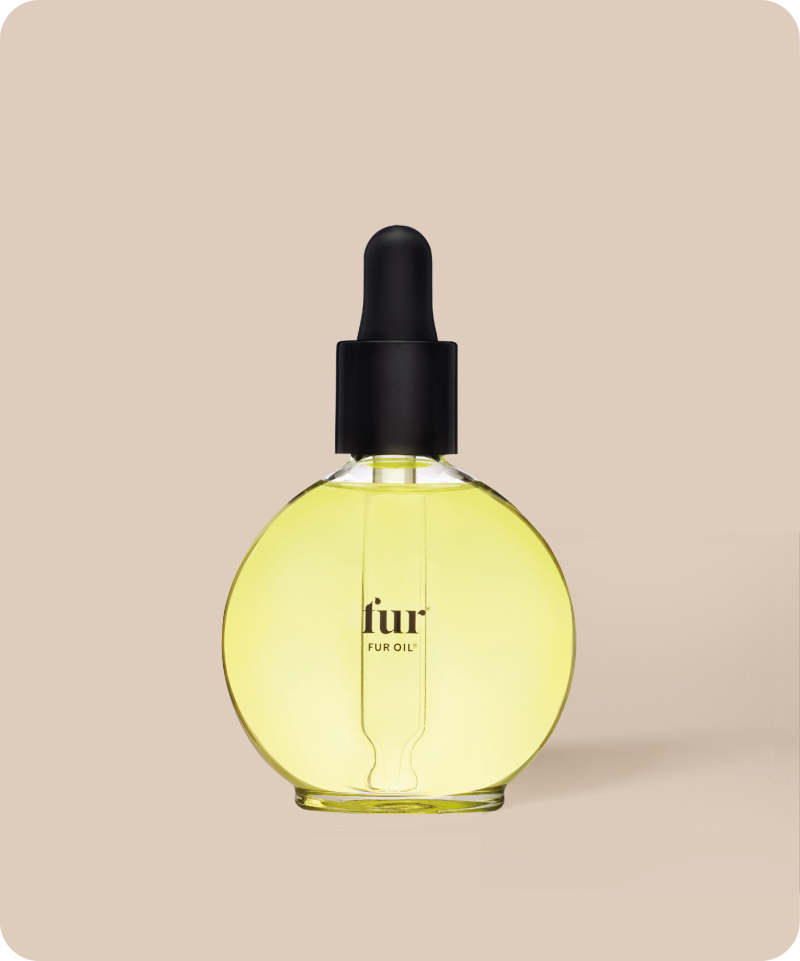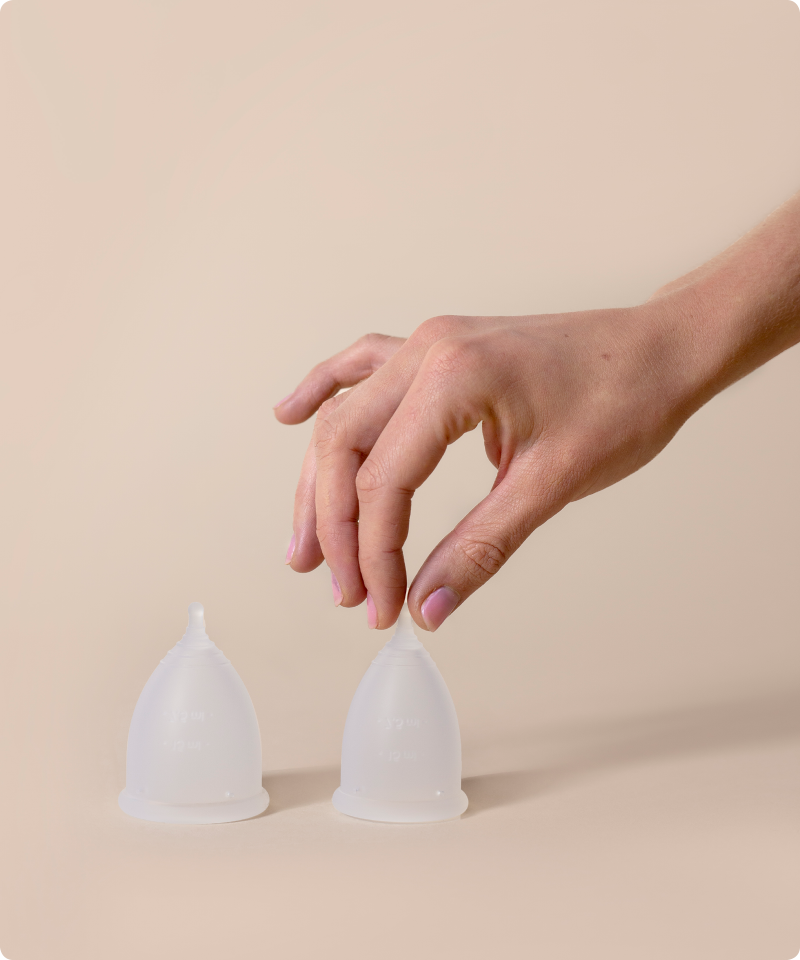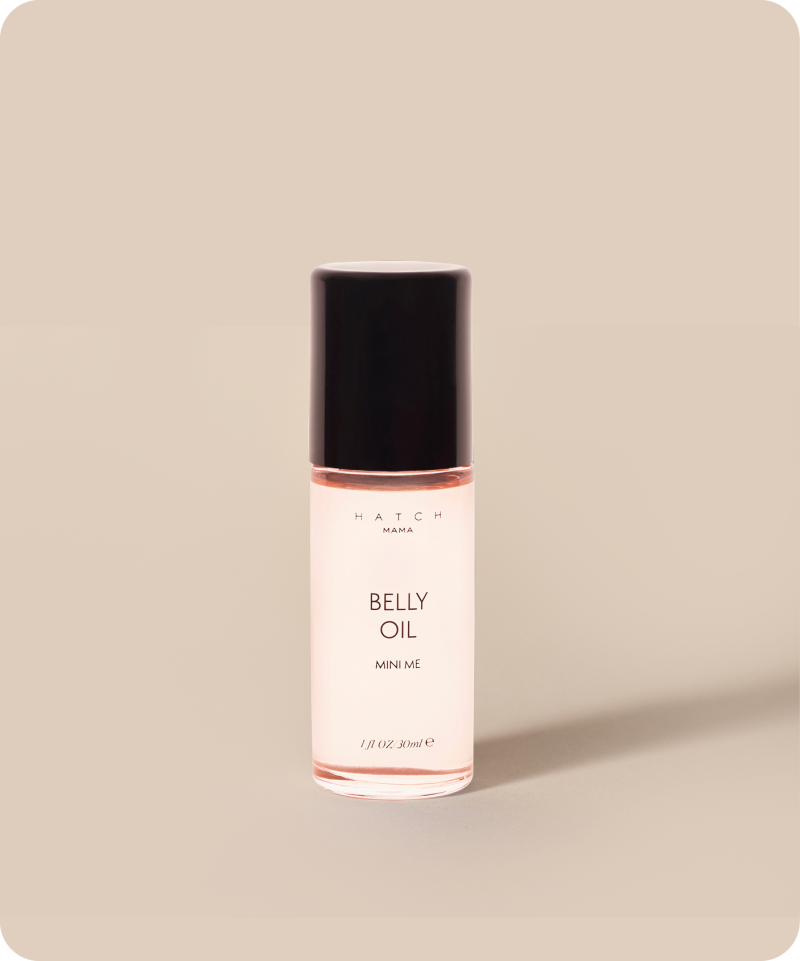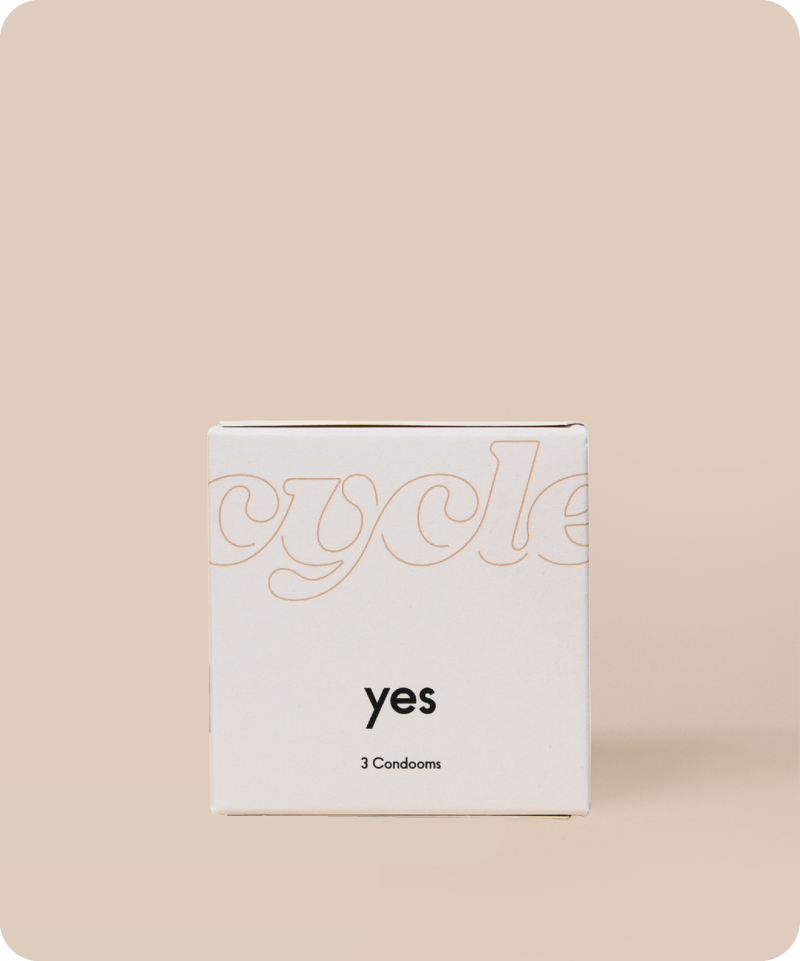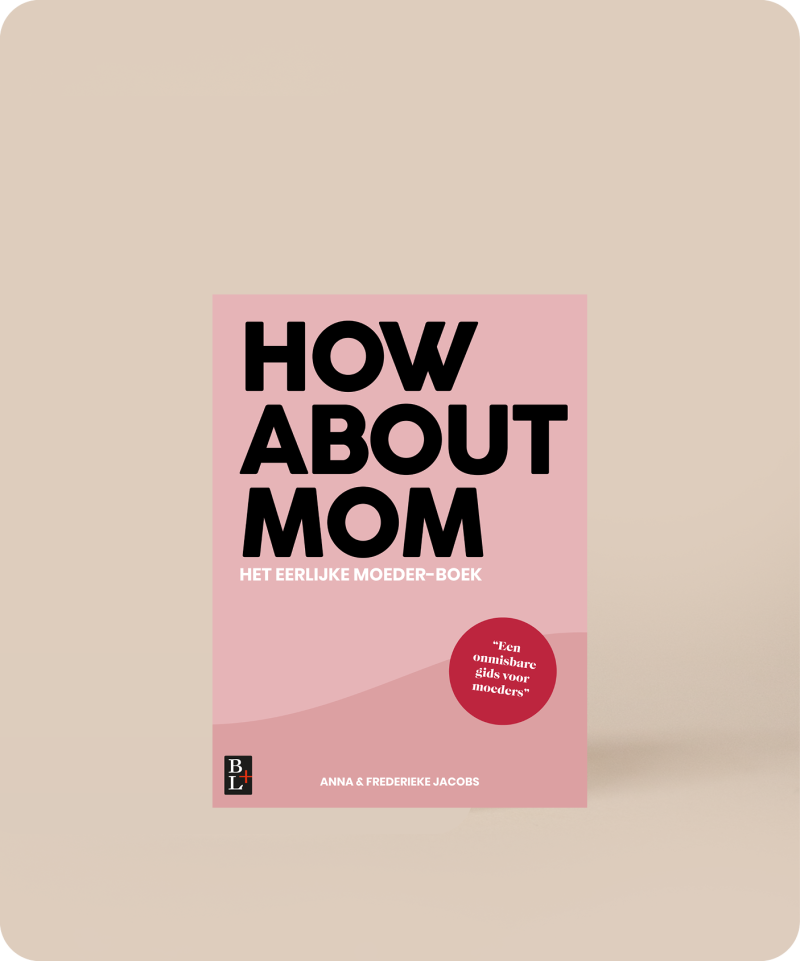The ultimate birth control list - All forms of birth control in one place!
There are so many options when it comes to birth control and sometimes it just feels impossible to make the right choice. Luckily, Cycle finally made the ultimate article giving you all the information about all the birth control methods. This way you can make a well informed choice and choose the method of birth control that fits best with your body and lifestyle!
1. Contraceptive pill
What is it
The pill is the most commonly used form of birth control among Dutch women. It’s a tiny little pill that contains hormones. You take it every single day for three weeks at a fixed time. After those 21 days the strip is empty and you can stop for 4 to 7 days before you start again with a new strip.
How it works
The contraceptive pill contains hormones that are awfully similar to the hormones that are produced by the ovaries: progesterone and estrogen. These hormones are responsible for regulating your cycle and also your fertility. They ensure ovulation, the build-up of cervical mucus and it’s shedding again if you don't become pregnant during your ovulation.
The hormones in the contraceptive pill ensure that there will be no ovulation and therefore no eggs to fertilize. Not only that, the lining of your uterus also gets thinner, making it harder for an egg to implant in it if it does get fertilized. And if the egg has no chance to implant, there is also no chance of pregnancy. Next to all this, the mucus in the cervix gets thicker and the thicker the mucus, the harder it is for sperm to travel to your uterus.
Types
What kind of pill is most suitable for me? That question is difficult to answer because there are so many different kinds of contraceptive pills that you can’t see the forest for the trees. But we would like to help you find the way! Every brand of pill has a different ratio and dosage, but they can still be divided into different categories.We’ll get you started with the monophasic, biphasic, and triphasic birth control pills.
All the pills in a monophasic pill strip have a fixed dosage of hormones, making it an almost 100% reliable pill.
In the biphasic and triphasic pills the ratio of progestin and oestrogen is different during each phase. There are different colored pills in the strip that you have to take in the right phase. If you have no problems taking the right pill at the right time then this pill is just as reliable as the monophasic pill. The most important benefit of this pill is that it better matches your natural hormonal cycle due to the small differences in the level of hormones in each phase.
There’s also a four-phasic pill. The pill strip contains 4 kinds of pills with varying ratios of hormones, as well as 2 white placebo pills. Just like the biphasic and triphasic pills, this pill mimics your natural hormonal cycle as much as possible with the varying hormone levels.
The mini pill only contains one kind of hormone: progestin. This contraceptive pill is a little less reliable than the other kinds of pills, so it should be taken every day at the exact same time. This pill is usually only used by women who are not allowed to use oestrogen or are very sensitive to it.
The contraceptive pill is still getting better and better all the time. There are now four generations of pills available. The biggest difference between them is the amount of hormones they contain. You can read more about the different generations down below.
Microgynon 30
The most prescribed contraceptive pill in the Netherlands is the Microgynon 30 pill, which is a second generation pill. A second generation pill contains less oestrogen than a first generation pill. This is a big improvement because the less oestrogen is in the pill, the lower the risk of thrombosis. Microgynon is also a combination pill because it contains 2 kinds of hormones: Levonorgestrel (a progestin) and Ethinylestradiol (an oestrogen). You can get this pill in two dosages. The difference between Microgynon 30 and Microgynon 50 is that the latter contains a higher amount of oestrogen. Because of the high amount of oestrogen, the Microgynon 50 pill is mainly prescribed to women who are troubled by spotting.
Everything about Microgynon 20
Read hereYasmin
Dealing with acne and a bloated feeling? Maybe the Yasmin pill can help you with that. Studies have shown that this fourth generation pill may reduce your acne and also retain less fluid. Yasmine contains 20 microgram of Ethinylestradiol (oestrogen) and therefore has a higher risk of thrombosis compared to other kinds of pills.
Reliability
The contraceptive pill is almost 100% reliable, if you take it on time and - in the case of a multi-phase pill - in the right order.
Where to get it
In the Netherlands, the pill is only available with a prescription, which you can get from your GP and some GGDs (public health services).
Costs
In the Netherlands, the cost of the contraceptive pill lies between 10 and 40 euros a year, depending on the brand. The pill is currently not covered by basic health insurance if you’re older than 21. There are voices in favor of making the pill free again, but for the time being the rules for reimbursement via insurance remain complicated. Up to the age of 18 the reimbursement is covered by basic health insurance and you don’t have to pay a deductible, but sometimes you have to pay a personal contribution. Are you between 18 and 21 years old? In that case, the pill is still covered by basic health insurance, but you do have to pay a deductible and sometimes also a personal contribution. If you're older than 21, the pill isn’t covered by basic health insurance and you have to pay for everything yourself. You can take out additional insurance but that costs at least 70 euros per year. So you should check first if it’s useful or if you're actually spending more money this way. If you have additional insurance, you no longer pay a deductible, but sometimes you still have to pay a personal contribution. The exception to all this are women who suffer from endometriosis, they often receive reimbursement from basic health insurance. So please make sure you’re well informed by your insurance company!
Benefits
When you take the pill you’ll have a regular cycle and you can also skip the ‘withdrawal bleeding’ aka your period by continuing to take it without a break. Super useful for when you’re going on a holiday or if you got some spicy things planned right when you’re supposed to be on your period. The pill also helps against intense menstrual symptoms, your bleeding is for example often less intense and painful. If you stop taking the pill completely you can theoretically get pregnant again right away.
Side effects
The pill does come with some side effects. How much you suffer from side effects is somewhat linked to the amount of oestrogen in the pill. The higher the amount of oestrogen, the more chances of side effects, so if you experience side effects it might be wise to switch to a pill with a lower amount of oestrogen. The most common symptoms are:
spotting ( especially in the first few months)
headaches
a decreased libido
painful or sore breasts
mood swings
emotional or somber mood
fluid retention
nausea
acne
The pill gives slightly increased risk of thrombosis, stroke, cervical cancer, and breast cancer. These are serious side effects, but luckily very rare. Do you want a pill with few side effects? Then the combination pill with levonorgestrel (progestin) and 30 micrograms ethinylestradiol (oestrogen) is probably the best choice for you.
Contraindications
The contraceptive pill is not suitable for everyone. For example, taking the pill is strongly discouraged if you’re 35 years or older and smoke, because it increases the risk of cardiovascular disease. It’s also better not to use the combination pill if you already have thrombosis or cardiovascular disease.
It’s better not to use the mini-pill in case of thrombosis, unexplained vaginal bleeding, progestogen-dependent tumors (breast cancer) and severe liver impairment.
Among some women there’s also a fear of cancer when using the pill. But the pill honestly has little influence on this, especially now that most pills contain a low dose of oestrogen. Taking the pill does increase the risk of venous thrombosis (blood clots in the veins), especially in the first year of taking it. Pills with desogestrel and gestodene give a slightly higher risk of thrombosis, so these are not recommended when you first start taking the pill.
When you're choosing a contraceptive pill, keep in mind possible interaction with other medicines you take. You should be careful combining different medicines because they might make the pill less reliable. The most important medicines to look out for are medicines for epilepsy, tuberculosis and fungal infections (antifungals).
Mental side effects
There’s been little research about the influence of the contraceptive pill on the brain and your emotions, but there is nonetheless some clear evidence that the pill acts on areas of the brain that are important for mood, anxiety and pleasure. They have regularly shown a link with depression, but the exact cause of this is still unclear. It’s also very difficult to study this link, because many other factors also play a role when it comes to depression. Fortunately, more and more attention is being paid to this subject, also among GP’s. You can also read more about the influence of hormones and the pill on your mood here.
What influence does stress have on your cycle.
Read hereLast but not least
According to Statistics Netherlands, the number of women who use the pill in the Netherlands has been declining for a few years. Especially women in their twenties have grown ‘tired’ of taking the pill. This fits in with the larger social trend in which we prefer everything as natural as possible. And taking hormones every single day is not particularly natural.
2. Contraceptive patch
What is it
The contractive patch is a flexible and waterproof patch of 4.5 by 4.5 cm that you stick on your body. You can stick it on your butt, belly, or arm and replace it every week. After three weeks you take a patch-free week, in which you’ll get your period. You’re protected against pregnancy throughout the whole cycle, even during the patch-free week.
How it works
The patch releases a daily dose of oestrogen and progesterone and works in the same way as the combination pill does.The only difference is that if you use the patch, the hormones enter your bloodstream via your skin.The hormones in the patch prevent ovulation and thickens the cervical mucus so that it’ll become more difficult for sperm to move through the cervix. It also influences the lining of the uterus so that a fertilized egg is less likely to implant itself. If that doesn’t protect you against pregnancy, we don’t know what will.
Brands
The contraceptive patch called ‘Evra’ is available in the Netherlands.
Reliability
If you’re always on time with sticking on the patch, the chance of getting pregnant is less than half a percent per year. It sounds very reliable but in reality, this chance is actually a lot higher. Sometimes it’s the case that women forget to stick on a new patch in time after the path-free week. The patch also becomes less reliable, and is therefore not recommended, if you weigh more than 90 kg.
Where to get it
You’ll need a prescription for the contraceptive patch. That means you’ll have to pay a visit to your GP first if you want to start with this kind of birth control method. Then you can just pick up a new package at the pharmacy if you like the Evra patch and you want to continue with it.
Costs
The Evra costs around €15 per month and it’s covered by basic health insurance up to the age of 21. But, there’s still a personal contribution. Up to the age of 18, the Evra is covered by your parents’ insurance and you don’t have to pay this personal contribution. If you're 21 years or older and want to have the Evra covered, you can get additional insurance that covers birth control.
Benefits
You’ll get a very regular cycle if you use the contraceptive patch. You can also regulate your period yourself by skipping or postponing the path-free week. Super nice if, for example, you’re planning to go on holiday or have sex. The patch often makes your bleeding less heavy and painful and it also remains reliable when you have to throw up or have diarrhea. If you stop with the patch, you can get pregnant immediately again. And last but not least: You only have to think about birth control once a week. This is a benefit for many women, but because you only have to think about it occasionally, you could also forget to stick the patch on again.
Side effects
The hormonal patch has the same side effects as the contraceptive pill. You can, for example, suffer from headaches, tense breasts, gloominess, a decreased libido, and/or spotting. These symptoms usually disappear after you have used the patch for a few months. The spot where you stick the patch may turn red, or the patch can come off without you noticing. If this happens you’re no longer protected against pregnancy after 24 hours.
Other side effects are:
mood and anxiety disorders
weight gain
dizziness
vaginal irritation and yeast infection
blurred visio
fluid retention
nausea
abdominal pain or diarrhea
acne
muscle spasms
breast lumps
changes in menstrual cycle, uterine cramps, painful periods
vaginal discharge ( Read what vaginal discharge says about your cycle here)
Important to note that using a combination method gives a higher risk of thrombosis (blood clots) compared to a non-combination method.
Contraindications
The hormonal patch isn’t suitable for you if you:
are older than 35 and smoke (in relation to the risk of cardiovascular disease);
have diabetes;
have migraines with aura and smoke (increased risk of stroke);
have had thrombosis or pulmonary embolism (more likely to have it happen again);
have had a heart attack or stroke (same as above);
are older than 35 and have (had) breast cancer, are a carrier of the BRCA gene or if breast cancer runs in the family;
take certain medicines, for example against epilepsy
Also be careful if you:
have high blood pressure, cholesterol, diabetes mellitus and/or are overweight;
are under the age of 35 and smoke;
have migraines with aura (even if you don’t smoke);
have a family history of thrombosis or cardiovascular disease;
Mental
The patch works the same as a low dosage pill, and so unfortunately it can also cause mood swings. Do you notice that you’re more irritable, nervous or depressed? Then we recommend that you contact your GP.
Last but not least
If you don’t want people to know that you’re using birth control, then maybe this is not the best option for you because the patch will be visible at times. And don’t forget that a contraceptive patch doesn’t protect you from STIs!
3. Condoms
What is it
A condom is a thin cover - usually made of latex - with sperm-killing paste on the inside. It’s put around the penis and when the man ejaculates the sperm is stopped and stays inside the condom.
They come in all shapes and sizes, with ridges and flavors. Most condoms are so thin, you’ll hardly feel them, especially if you use the right size. Condoms are considered a barrier method.
How it works
When a man wears a condom, his penis doesn’t come into direct contact with your vagina, anus or mouth. This means that you’ll be protected against pregnancy and most STIs. A condom is rolled up in the package, so when you want to use a condom you have to unroll it, but how do you do that? First of all, be careful with sharp nails or jewellery when opening a condom package and only roll the condom over the penis when it’s erect. Make sure you’re holding the rolled-up side the right way, then pinch the top of the condom with one hand and roll the condom down as far as possible with the other hand. Let’s go! Make sure he pulls out his package right after he climaxes, or at least before it gets soft again. Hold the condom when he pulls out, because there’s a chance it slips off and then semen will still get in places you don’t want it to be. And also be careful that you don’t spill anything when you’re throwing away the condom. If you want to be absolutely sure there’s no sperm anywhere, you can always wash your hands afterwards.
Types
Condoms can be divided in 4 types: standard condoms, extra thin condoms (for more feeling during penetration), fun and stimulating condoms (with ribs, nubs, flavors etc.) and performance condoms ( these have benzocaine cream on the top, which slightly numbs the head of the penis, making the man ejaculate less quickly and therefore last longer). Nowadays you also have condoms that are suitable for vegans. Vegan condoms don’t use a by-product from dairy products, which most condoms do use.
Reliability
If you use a condom properly, the chance of getting pregnant is 2 to 5% (for example because the condom broke). Using only a condom is enough to not get pregnant. But if you don’t use a condom in the right way, there’s an 18% chance that you’ll still get pregnant despite using a condom. Examples of incorrect condom use are:
opening the package with your teeth, scissors or sharp nails (the condom may break).
there’s already pre-cum before you put the condom on (so don’t wait too long!).
the condom slips off because the penis isn’t erect enough yet.
pulling out when the penis has already gone soft again, causing semen to leak.
using the condom more than once. (Absolutely don’t do this!).
use lube that’s not water or silicone based (oil or vaseline affects the latex).
One of you has semen on your fingers and passes it on that way.
Where to get it
You can get them at the supermarket, drugstore, gas station, pharmacy, in bars or clubs that have a condom machine, online or at the cycle webshop.
Costs
Condoms aren’t covered by basic health insurance, but they’re sometimes covered by additional insurance. Sometimes, an amount is reimbursed, but there are also insurance companies that send condoms to you if you get additional insurance.
Benefits
Want to have sex but rather not have an STI? The condom is the only way to protect yourself against STIs as well. STI stands for sexually transmitted infection. According to Sense, around 100,000 people in the Netherlands get an STI each year.
All the STDs and their symptoms gathered.
Read hereSide effects
Not everyone is okay with latex. You Might get an itching or painful feeling in your vagina, or it can even get all red when using a condom. Fortunately, there are some great alternatives for latex condoms. To find out which condom suits you best if you have a latex allergy, it’s important to know that type of latex allergy you have. There are 2 types: type I and type IV. If you have the first type, you can use condoms made of polyurethane and polyisoprene, which are easily available. But with the production of these latex-free condoms, chemicals are used which can cause problems if you have the type IV latex allergy. In this case,it’s best to contact a dermatologist to see what’s the best option for you.
Mental
Sometimes you can struggle to put on a condom. For example, because you find it annoying or exciting, or because your penis goes soft while putting it on. Talk about this with your partner and see if you can make a game out of it. If it’s a real problem for you, you should talk to your GP about it. They’re used to talking about this kind of thing, so they won’t think it’s weird.
Last but not least
Did the condom break during sex? Then contact your GP within 12 to 72 hours to discuss what you can do to still prevent pregnancy (such as taking the morning-after pill) or to detect and treat an STI (such as HIV).
It’s also important to make sure the condom package has a CE logo on it. This is a European quality mark which ensures that the condom is of good quality.
4. Diaphragm
What is it
A diaphragm is a cap - usually made of silicone - that provides a barrier between the sperm trying to enter the cervix and the cervix. You use it in combination with a spermicidal gel. The cap wraps around the cervix and stops sperm from entering the cervix. You can use the diaphragm for one to two years (Cycle tip: write down in your planner when you need to buy a new one). The diaphragm is a birth control method that isn’t used that much in the Netherlands. If you want to use this contraceptive, you first have to go to your GP for an internal examination to measure which size diaphragm you need.
How does it work
You should apply spermicidal gel on the diaphragm and insert it up to 2 hours before having sex. Squeeze the diaphragm double with the hollow side facing the uterus. Then you push it in as deep as you can and slide the hollow side over the cervix. When the cervix is completely covered, you can have sex. You should remove the diaphragm between 6 and 24 hours after sex to make sure the spermicidal paste has done its job. You can remove it by hooking your finger behind the edge of the diaphragm and pulling it down. After you get it out you can wash it with warm water and just let it dry.
Types
There are many different types of diaphragms. It’s best to discuss which diaphragm is best for you with your GP.
Reliability
If you use a diaphragm correctly, it’s reliable for about 95%. However, in practice it’s a relatively unreliable birth control method because it’s often inserted incorrectly, moved or forgotten. As a result, 6 to 26% of the women who use a diaphragm still get pregnant.
Where to get it
You can buy a diaphragm from a pharmacy (without a prescription) or online).
Costs
Caya costs about € 36 each and Femcap about € 70. Because it works for one to two years, it comes down to €15 to €35 a year. Since 2011,diaphragms are only covered by basic health insurance if you’re under 21. Are you older than 21? Then a couple of insurance companies offer additional insurance.
Benefits
A diaphragm contains no hormones and therefore has relatively few side effects. Also nice for some women: you keep your natural menstrual cycle. But it’s important to note that women with serious menstrual symptoms (endometriosis, fibroids, coagulation disorders or PMS) often benefit from other methods that are more suitable for their symptoms. Because of the lack of hormones, a diaphragm can be a solution for women who are breastfeeding. Another benefit: unlike with the use of a condom, the man doesn’t have to pull out after ejaculation. This way you can stay snuggled up for a while after climax.
Cons
The diaphragm must remain in place for at least 6 hours after sex so that the spermicidal gel can do its job. Some also say that the diaphragm doesn’t always stay in place during if you have some wild sex. If you use a diaphragm, it slightly increases the risk of a bladder infection and it also doesn't protect against STIs. Please note: if you’ve been pregnant or have gained or lost a lot of weight, you need to visit your GP again for an internal examination.
Side effects
As we’ve said before, a diaphragm contains no hormones and has few side effects. It’s possible that the ring rubs against the vaginal wall a little, which may cause irritation and more discharge. If you use a diaphragm after the menopause, the vagina can be a bit dry and you’ll have more chances to get little wounds and discharge. A diaphragm is also unsuitable if you’re allergic to latex or spermicides, especially those containing nonoxynol-9.
Contraindication
You shouldn’t use a diaphragm within 6 weeks after giving birth. It’s also not recommended to use a diaphragm if you have a vaginal infection. Is your infection gone? Throw your old diaphragm away and buy a new one to prevent another infection.
What if your fungal infection doesn't disappear or keeps returning?
Read hereMental
It doesn't affect you mentally because there are no hormones in it.
Good to know
Practice inserting the diaphragm a few times before you start using it for real. Inserting and removing it takes some time to master.
5. Vaginal ring
What is it
The vaginal ring is a flexible plastic ring containing hormones that you push to the back of your vagina with your finger. You wear it for three weeks straight and then take it out again. After two to three days you get your period and after around 4 to 7 days you insert a new ring, even if you still have your per
Types
The vaginal ring is available under the names NuvaRing and Ornibel and as the brand-less Etonogestrel/Ethinylestradiol. The Ornibel and the generic type are slightly cheaper than the NuvaRing, but the effect is exactly the same.
All you should know about the Nuvaring
Read hereReliability
When used properly, the ring is as reliable as the pill and the chance of pregnancy is about 0.7%. But it’s a matter of timing: If you’ve inserted the ring on Wednesday at 10 o’clock, it’s important that you also take it out again at the same time on Wednesday 3 weeks later. If you inserted the ring again one week later but it’s more than 3 hours too, it will work less reliably. So this method of birth control is only for people who can plan things really well. Because this doesn’t always go well, 7 out of 1000 women who use the ring still get pregnant.
Where to get it
The vaginal ring is available at the pharmacy. You have to go to your GP for the first prescription, after that you can get new prescriptions at your pharmacy.
Costs
The ring costs between 13.30 and 15 per month. Birth control up to the age of 18 is covered by basic health insurance. If you’re between 18 and 21, you pay it from your deductible. From the age of 21, birth control will only be reimbursed by additional insurance that covers birth control. No additional insurance? Then you have to pay for everything yourself. An exception to this is if you use the ring for the treatment of endometriosis or menorrhagia.
Benefits
You only have to think about birth control once (without ring-free week) or twice (with a ring-free week) a month. That’s also a con: you can forget to put in a new ring after the ring-free week and then you can be pretty screwed. Other benefits are: you can plan your period quite precisely or skip it by not having a ring-free week, and it still stays reliable if you vomit or have diarrhea.
Side effects
More than 10% of women reported the following side effects:
vaginal
yeast infection
vaginal discomfort
itching
discharge
weight gain
psychological disorders: depression
less desire to have sex
nervous system: headaches or migraines
stomach and intestines: abdominal pain
nausea
skin: acne
breast and genitals: painful breasts, pelvic pain, painful period
general: losing the ring.
contraindications
You’re strongly advised not to use the ring if you have hepatitis C and are taking medication containing ombitasvir/paritaprevir/ritonavir and dasabuvir. If you’re pregnant or think you might be pregnant, you shouldn’t use the ring.
Mental
Depression is a frequently mentioned side effect of using the vaginal ring, and sometimes you can also experience irritability, mood changes, mood swings and PMS. Contact your GP if you notice any of these problems when using the ring.
Last but not least
Sometimes a partner can feel the ring during sex. It’s completely safe but if it bothers you, you can remove the ring during or just before the sex. Make sure you put it back in within three hours, otherwise the birth control is no longer reliable. Please note: the vaginal ring doesn't protect you against STIs.
You can also lose the ring on accident, for example if you haven’t inserted it deep enough, when you’re removing a tampon, during sex or if you push too hard while pooping. You can also lose the ring if you have a prolapsed cervix. So it’s important to check regularly if the ring is still in place.
6. Female condom
What is it
A condom, but for women. It looks like a rubber bag with two flexible rings on each end. It stops semen and at the same time protects you against STIs, a win-win right?! The female condom was a huge flop when it was introduced twenty years ago. But ten years ago a newer one was made with the softer and more pleasant-feeling material nitrile. It was a success almost everywhere, except in….The Netherlands.
How it works
You can insert a female condom yourself up to 24 hours before you plan to have sex. It’s kinda like putting in a tampon, except that you push the small inner ring of the condom together with your finger and insert it as deep as you can into your vagina. If you use a little lube, it should be easy-peasy. The large outer ring hangs out of your vagina and covers your labia. This might feel a bit weird at first, and we know it doesn't sound sexy at all, but we have some enthusiasts here at Cycle. This is because the outer ring provides extra clitoral stimulation and also massages the outer labia.That’s where thousands of nerve endings are located, so we won’t say no that…
The female condom should be changed everytime you have sex. That means you have to throw it away and insert a news one before you have sex again. Do you want to remove the condom? Twist the outer ring and gently pull out the condom.
Types
Passante, Durex, Femidom and Ormelle are some well-known brands that sell female condoms. Pay attention to the CE mark and the material the condom is made of, because not all condoms are made of allergy free Nitrile. Some are made of latex and polyurethane.
Reliability
If you use it correctly, a female condom is 98% reliable. But in practice the number is always a bit lower and so the reliability is actually about 85%. This is mainly because the condom can leak when you take it out in the wrong way, causing sperm to still enter the vagina. Despite that, we’re still big fans of the female condom: It’s the only birth control that women can use to protect themselves against HIV and most STIs. Because the end of the condom covers most of your outer labia, you also reduce the risk of herpes, syphilis and genital warts.
Where to get it
You can buy the female condom at the drugstore, at the pharmacy, online or at some supermarkets.
Costs
The female condom is a relatively pricey option when you compare it with other birth control: the price of 3 pieces is 6.95. That’s a bit more expensive than the male condom.
Side effects
There are no known side effects. As a matter of fact, it’s actually perfectly suitable for people who are sensitive or allergic to hormones, latex, gluten or parabens.
Contraindications
none.
Benefits
A female condom has a larger circumference (namely 17cm) than a male condom (10.5cm). That tight feeling men sometimes experience when using a condom is no longer an excuse. Another plus: nitrile adjusts to your body temperature so it feels comfortable. The female condom is also a great option for when you're on your period. It might feel a lot more hygenic compared to a male condom.
Cons
The condom can feel a bit dry and stiff, and some extra lube is no luxury. A big downside to the female condom is that it doesn't stay in place very well when you have rough sex. There’s also a chance that it can slip inside your vagina during sex. We also heard that the female condom makes a squeaking or rustling sound during penetration (‘as if you put your dick in a sandwich bag..’). Well, in this case the answer also seems to be to use some extra lube.
Mental
A plastic ring hanging out of your vagina with a little bag attached to it...Yeah, we understand that’s definitely a hurdle to cross when you start experimenting with this kind of birth control.
Last but not least
You have to practice a bit before you can insert the female condom with ease. So it’s a good idea to do this on your own before you’re getting laid, or try it out together, it might be super fun and exciting!
7. Contraceptive implant
What is it
It’s a white, thin, flexible rod that’s the size of a match (4cm long). The implant contains progestogen (etonogestrel to be precise), which prevents ovulation from happening. The mucus at the beginning of your cervix also thickens, making it harder for sperm to pass through. Next to that, a fertilized egg can’t implant itself in your uterus. Triple protection, who doesn’t want that!
How it works
Inserting the implant is a simple action that takes about 30 seconds. After a local anaesthetic to numb the area on the inside of your upper arm, a trained doctor inserts the hormonal implant under your skin with a syringe. The implant is invisible and is designed in such a way that it continuously releases a low dose of hormones into your body, without peaks and drops. It’s important to know that the hormonal implant doesn't have a break week. This means that you can’t influence the timing of your periods. After three years (two years for overweight women), your GP removes the implant by numbing your arm and making a small incision. This will leave a small scar.
Types
The contraceptive implant is available in the Netherlands under the brand name Implanon.
All you should know about the Implanon
Read hereReliability
It’s very reliable (99.7%) because it releases the same dose of hormones for a longer period of time, you can just forget it for 3 years. Be sure to note down when the old implant has to be removed and/or changed. If you don’t have it replaced in time, the birth control is no longer reliable.
Where to get it
You can get the contraceptive implant via your GP.
Costs
It costs about €120 to €140 and lasts 3 years, so it’s about €40 to €47 a year.
Benefits
The biggest benefit is that you can’t forget it: you only need to think about it once every three years. Also useful: Implanon keeps working even if you vomit or have diarrhea. Many women also report that the pain during their period is less or even disappears completely.
Side effects
Like all birth control methods that contain hormones, Implanon has a list of unpleasant side effects, including migraines and nausea, painful breasts, decreased libido, acne, mood swings and weight gain. Besides these symptoms, your period might change or even disappear completely. Some women are glad they don’t have their period anymore and others may find it annoying and rather see their period each month. In 1 out of 5 women their period disappears but the same number of women experiences repeated or prolonged bleedings.
Contraindications
A contraceptive implant may interact with other drugs. Therefore, have your pharmacist check whether you can safely use this form of birth control (also check the interaction with medicines you buy without a prescription). Don’t get an implant if you have or have had breast cancer, or if breast cancer runs in the family. Using this form of birth control is strongly discouraged if you’re a carrier of the breast cancer gene BRCA1 or BRCA2.
Mental
Mood changes (depression and emotional lability) are often mentioned as a common side effect. Little research has been done on the influence of hormonal birth control on the brain and emotions, but there’s clear evidence that these medicines affect areas of the brain that are important for mood, anxiety and pleasure. They’ve also shown that there’s a link between depression and birth control, but the actual cause is still unclear. Depression is also very difficult to study because it can be caused by many factors.
Last but not least
Do you already feel light-headed when thinking about needles? Then you can better skip this form of birth control.
8. Contraceptive injection
What is it
An injection that contains the hormone progesterone. The injection protects you from pregnancy for 3 months. You’ll no longer ovulate and the mucus of the cervix thickens, making it more difficult for sperm to pass through. What’s more, a fertilized egg can’t implant itself in the uterus.
How it works
You can get a contraceptive injection at your GP but you can also do it by yourself at home.You’ll get the injection between the first and fifth day of your period into the muscle of your butt, your upper arm, or under your skin. You’re immediately protected against pregnancy. If you want to inject yourself, do it in your abdomen, just under the skin or in your thigh. Tip: Note down how long the injection lasts and when you have to get a new injection.
Types
There are two types available in the Netherlands: Depo-Provera is injected in the muscle of your butt or upper arm and Sayana is injected under the skin.
Reliability
Of the 1000 women who get an injection, 2 women still get pregnant per year. This makes it a very reliable form of birth control.
Where to get it
The contraceptive injection is available on prescription at your pharmacy.
Costs
The most commonly prescribed injection, the Depo Provera, costs €8 for 3 months. If you’re younger than 25, then you only have to pay €1. Sayana costs €30. Are you younger than 21? Then the injection is covered by basic health insurance. Are you over 21? Then you can get additional insurance that covers birth control.
Benefits
The biggest benefit is that you don’t have to think about birth control every single day. You only have to get a new injection once every 12 weeks and that’s it. You might get your period less frequently or in some cases not at all, and many women like that.
Cons
After the first injection you’ll probably lose a little bit of blood. Usually this won’t happen again with the second injection. However, you can still experience the occasional bleeding (spotting) in between the injections. Also be careful if you want to try to get pregnant. Your body needs some time to get rid of the injected hormones, so it can last 6 to 12 months before your regular period (and thus your fertility) returns.The next thing is somewhat related to this: if you experience any side effects you’ll have to sit them out, as the hormones that have been injected have to break down on its own. And last but not least, you're not protected against STIs with this injection.
Side effects
Especially after the first injection you can experience the following side effects:headaches, breast pain, pimples, hair loss, gloomy mood or weight gain. If you use it for a longer period of time, you may develop osteoporosis (porous or weak bones). To prevent this you can take calcium and vitamin D supplements. The contraceptive injection may increase the risk of thrombosis.It doesn't matter if you get the injection from your GP or do it yourself, the side effects are the same. Although you may experience skin irritation when you inject yourself.
Contraindications
The contraceptive pill is not or less suitable if:
You’re younger than 18, because your bones haven’t stopped growing yet and the injection will affect the bones negatively;
You want to get pregnant soon after stopping contraception;
You have an increased risk of thrombosis (blood clots in blood vessel)
You already have (had) cardiovascular disease or have an increased risk of developing cardiovascular disease;
you smoke and are over 35;
you have (had) breast cancer, if breast cancer runs in the family or if you’re a carrier of the breast cancer gene BRCA1 or BRCA2.
Mental
The contraceptive injection has the same side effects as the contraceptive pill. Little research has been done on the influence of hormonal birth control on the brain and emotions, but there’s clear evidence that these medicines affect areas of the brain that are important for mood, anxiety and pleasure. They’ve also shown that there’s a link between depression and birth control, but the actual cause is still unclear. Depression is also very difficult to study because it can be caused by many factors. Luckily this topic is getting more and more attention.
Last but not least
You can’t skip, postpone or delay your period with the contraceptive injection because it doesn't make use of a break week.
9. IUD
What is it
The IUD is the second most used birth control method in the Netherlands after the pill. The most commonly used IUDS are the copper and hormonal IUD. A copper IUD is wrapped with a copper wire.The copper makes the sperm cells inactive and it also prevents the egg from implanting in the lining of the uterus. A hormonal IUD prevents the egg from implanting in the lining of the uterus as well. But next to that, the hormones in the IUD also thicken the cervical mucus so sperm cells can’t get through very easily. The hormonal IUD is inserted into the uterus and releases small amounts of the hormone Levonorgestrel - which is a progestogen - every day. The small amount of Levonorgestrel (0.02 mg per day in the Mirena and 0.009 mg in the Kyleena) ensures that you don’t get pregnant for five years. That means you don’t have to think about your birth control for five years, which is super nice because if there’s one thing you don’t really want to think about often it’s your birth control! In short, no matter which one you choose, both kinds of IUDs are very effective in preventing pregnancy.
Both the copper IUD and the hormonal IUD are T-shaped and about 3cm in size. There are two strings attached to it that hang from your cervix. These strings are there so your GP or gynecologist can easily remove the IUD from your uterus again. The IUD becomes less reliable after five years so when you hit that five year mark you should let it be removed or replaced.
How it works
The best time to get an IUD is just before or after your period. This way you can make sure you’re not pregnant. The cervix is also a little bit more flexible during this time, so insertion should be easier and a little less painful. Probably the most interesting part for you: what happens during an IUD insertion. The first thing that happens is that the doctor inserts a duckbill speculum into the vagina. The speculum is often warmed up in advance, so that it feels a bit more pleasant. It’ll still feel pretty uncomfortable when it’s inserted, there’s unfortunately no way around that, but it should be pretty painless most of the time. The trick is to stay as relaxed as possible, but that’s definitely easier said than done. The next step involves a bit more pain because in order to place the IUD in the uterus the doctor grasps the cervix with a clamp. If you’re dreading the pain you could ask for a local anesthetic, this will be done with a very thin needle and won’t hurt.
The cervix is then widened a little so that the IUD can be inserted into the uterus with a special inserter. You can experience abdominal pain, such as cramping, after the insertion of an IUD, but this usually goes away after a few hours. If you take one Naproxen 500 mg or 2 paracetamol tablets of 500 mg 1 hour before the insertion, you generally shouldn’t have any problems.
Types
There are many different brands of IUDs available in the Netherlands. The most commonly used hormonal IUDs are the Mirena and the Kyleena IUD. You have some more choices when it comes to the copper IUD. There is the Flexi T (protects for 5 years), the T-safe (10 years), Genefix (5 years), Multi-safe[Short] (5 years) and the Ballerine,which is a fairly new IUD without hormones that protects you for 5 years. This IUD rolls up in the uterus instead of having the usual ‘T-shape’.
Reliability
The hormonal IUD is very reliable, the chances of getting pregnant is only 0.2%. But the copper IUD isn’t far behind her hormonal friend: the chances of getting pregnant with a copper IUD is about 0.8%.
Where to get it
An IUD is only available at the pharmacy, with the exception of the T-safe, Ballerine and Multi-Safe short. These are also available online.
Costs
The price of an IUD varies per brand. The well-known Mirena IUD costs €160, while the Kyleena, the other hormonal IUD, costs €150. You can buy a T-safe copper IUD for €69, while the ballerina is almost double the price at €119. And unfortunately you have to do more than just buying the IUD, because it also has to be inserted. Would you like a specialist or gynecologist to do this for you? Then you have to pay around €250 for this procedure. If you go to your GP for an IUD insertion it’s free of charge. This is because a visit to your GP is covered by basic health insurance. But not all GP’s do IUD insertions, so always discuss the options with your own GP.
Are you younger than 21? Then birth control is covered by basic health insurance, but you pay this from your deductible. Already paid your deductible? Then the copper IUD is completely covered by insurance. Are you older than 21? Unfortunately your birth control is no longer covered by insurance.
Benefits
You won’t have to think about birth control for at least 5 years;
A copper IUD is ideal for women who can’t or don’t want to take hormones;
The hormones in a hormonal IUD won’t go through your whole body, but are directly put into the uterus;
After removing an IUD you’re immediately fertile again;
A hormonal IUD influences your cycle and most women have fewer periods. Some women even stop having periods all together.
Cons
Some women find the insertion painful
You’re not protected against STIs, so you may need to use condoms as well.
Your period can get heavier and you might bleed more in the first few months.
A hormonal IUD contains a small amount of progestin. This hormone can cause acne, headaches, dizziness and swollen breasts in the first few months.
There’s suddenly an IUD in your uterus and your body has to get used to that, so you might experience some abdominal pain in the beginning.
All the steps of having an IUD inserted and removed
Read hereSide effects
Hormonal IUD (kyleena, Mirena): Your menstrual cycle changes: spotting, irregular blood loss or no period at all; mood swings; migraines - some women actually experiences less migraines; Acne; Excessive body hair (hirsutism).
Copper IUD (T-safe, Ballerine, etc.): Possibly more discharge; Possibly a heavier period
Contraindications
You can’t have an IUD: when your uterus has an abnormal shape, if you have an STI, if you’re pregnant, experience unexplained blood loss/ abdominal pain, or recently delivered a baby (<6 - 12 weeks). A copper IUD isn’t recommended for women who have naturally heavy periods, have an allergic reaction to copper, or suffer from Wilson’s disease. Hormonal IUDs aren’t recommended for women who are sensitive to certain hormones, who are prone to thrombosis or who are suffering from certain forms of cancer.
Mental
The hormones that enter our body through hormonal birth control not only work in the uterus but also in our brains. So it’s not only your fertility that’s influenced but also your psyche. It was thought for a very long time that the hormonal IUD doesn’t affect our mental well-being, because the hormonal IUD doesn’t flatten the body’s own hormones as strongly as the pill. This has been one of the major advantages of the IUD over the pill. But, new research has increasingly shown that a hormonal IUD can also cause negative changes in your mood and libido. However, we don’t know how it works exactly because there is not much known about this yet.
Last but not least
After you get your IUD removed by a specialist, you’re immediately fertile again. You can insert an IUD again 10 to 12 weeks after you give birth.
10. Contraceptive App (Daysy or Natural cycles)
What is it
A birth control app such as Natural Cycles is an app on your phone that works with a thermometer. Every morning before you get up you measure your temperature. You enter the temperature and also the days you have your period. With this information the app calculates whether you are fertile that day (visible with a red dot) or not (visible with a green dot). If it’s a red dot day, you have to use a condom or other protection if you’re having sex and don’t want to get pregnant. It is recommended to buy a thermometer with two decimal places, because the more accurately you measure your temperature, the easier it is for the app to calculate your natural cycle. Are you sleeping off your hangover or do you have the flu? You can put in the app that your temperature is different from normal. You can also put in your PMS symptoms. The more information you put in the app, the better Natural Cycles can calculate your cycle. This will eventually result in more accurate green days and that’s what we’re here for!
How it works
The Natural Cycles app is linked to software that predicts the fertile days in your cycle via a complex algorithm based on the data about your body temperature. Believe it or not, but when you ovulate, your body temperature is 0.2 C higher than normal. You’ll actually notice this rise in temperature only after you ovulate and are no longer fertile,which is too late. This is why you have to enter data into the app for at least 3 months and at least 5 days a week before you use it as a birth control method. When you do this, the app has enough data to give you clear insight about your cycle and ovulation.
Types
Natural Cycles isn’t the only birth control app. Both Lady-Comp (from €415) and Daysy (€280) claim they can predict your cycle and fertility based on your body temperature. However, Natural Cycles is the only app you can use to not get pregnant that is certified, which means it’s the only app that can actually call themselves a legit birth control method.
Reliability
People can’t really agree on the reliability of this birth control method. The manufacturer of the app claims that it can protect you against pregnancy for 93% which is a pretty high percentage. And experts have serious doubts about this. They say that the method (using an algorithm to determine the fertile days) doesn't come without high risks. This is because the algorithm works with an assumed average cycle, while the average cycle doesn’t even exist according to scientists. It shouldn’t be possible to give an exact prediction whether you're fertile or not. So according to them, the app shouldn’t be used as a birth control method. There are several Swedish doctors that absolutely don’t approve of the Natural Cycles app. They noticed that a large number of women who ended up in the abortion clinic of their hospital told them they’re using Natural Cycles as a birth control method. Our conclusion after hearing all this: you could use it if you want, but if getting pregnant is an absolute no go you should think twice about using this form of birth control.
Where to get it
Download the app from the app store or the Google Play Store.
Costs
If you sign up with Natural Cycles, you’ll get the first month free and then you pay €8.99 per month or €64.99 for a whole year, which also includes a thermometer.
Benefits
More and more women don’t feel comfortable with the side effects and health risks that come with hormonal birth control. The artificial regulation of the cycle is also something that many women don’t really feel comfortable with. For those women, Natural Cycles might be a great option because it is a form of birth control without hormones and which follows your natural cycle, so nothing enters your body except for a thermometer. Enthusiastic users say they have a much better understanding of how their own bodies work. There are practically no side effects, but it can be a little tricky to use, as you could read under ‘reliability’. So don’t use this app if getting pregnant is something you absolutely want to avoid.
Contraindications
If you have an irregular menstrual cycle (shorter than 21 or longer than 35 days), the app doesn't work as well as it should and will show you an increased number of fertile days. If you have a medical condition that makes pregnancy a significant risk for you or your baby, it’s not recommended to use this form of birth control.
Natural Cycles won’t work properly if you’re also using hormonal birth control or are undergoing hormonal treatment that slows or stops ovulation.
It’s not recommended to use the app if you’re breastfeeding, because if you exclusively breastfeed your child, you won’t ovulate the first 4 to 6 months after giving birth. This app doesn’t work properly if you have a medical condition that leads to an irregular cycle, such as polycystic ovarian syndrome (PCOS) or thyroid-related conditions. Natural Cycles is also not recommended if you experience menopausal symptoms.
Mental
Natural Cycles can be an alternative to hormonal birth control because it doesn’t come with nasty side effects such as mood swings and lower libido.
Last but not least
There are other options beside Natural Cycles for women who don’t want to use birth control anymore, but also don’t want to get pregnant. For example, the Billings ovulation method, periodic abstinence or the standard days method. We’d like to note that not all these methods are equally reliable. Would you like to know how your chosen form of birth control scores on reliability? Then you can look at the Pearl index. This index indicates the number of pregnancies that occur among 100 women using a certain form of birth control for one year. For convenience sake you can also read that number as a percentage.
11. Female sterilization
What is it
Sterilization is an operation in which the fallopian tubes are blocked or sealed to prevent the sperm from reaching the egg and fertilizing it. The ovaries still produce eggs and female hormones, but the eggs can no longer reach the uterus anymore because it’s closed off. They end up in the abdominal cavity where they’ll be naturally absorbed by your body. Sterilization is the most definitive form of birth control: you can never become pregnant again.
How it works
The most common method of sterilization is laparoscopy. You’ll first get a general anaesthetic so you’ll be asleep during the surgery. The gynecologist will then make two incisions: one above your pubic hairline and the other near your belly button. Through the incision near your belly button, air is pumped into the abdominal cavity, causing your abdominal wall to bulge. It sounds a bit scary, but this way the gynecologist has a clear view on what they’re doing and that’s important. Through the incision above the pubic hairline, the gynecologist blocks the fallopian tubes with rings (Falope rings) or with clips (Filshie clips). In some cases, your fallopian tubes are burned shut. After this is done, the air is released from your abdominal cavity and the incisions are stitched up. This procedure won’t even take half an hour and you can usually go home the very same day. You could experience some abdominal pain during the first few days after the surgery. The stitches can be removed a couple weeks later. If you get sterilized through the abdominal wall, you’ll immediately be infertile.
Sometimes the fallopian tubes are just removed in its entirety (hysteroscopic sterilization) by means of a keyhole surgery (laparoscopy). This is not your standard procedure but it’s sometimes done if the fallopian tubes look a little different or if the gynecologist can’t place the clips. Of course, this is always discussed with you beforehand!
A third method of sterilization is by inserting spring-clips through the vagina. But this is no longer done in the Netherlands because this method has so many side effects.
Reliability
Sterilization is a reliable method of contraception. The chance of you becoming pregnant after all is very small and only happens in 5 out of 1000 women. But your age does play a factor in this because the younger you are, the greater the chance of pregnancy. In women up to the age of 30, the chance of getting pregnant is 3%, between the ages of 30 and 35 the chance is 2%, and only 1 out of the 200 women above the age of 35 still gets unintentionally pregnant. It doesn't matter if rings or clips were used to block the fallionab tubes, these numbers are the same for both methods. If your fallopian tubes are burned shut, there might be a bigger chance of getting pregnant unless almost the entire fallopian tube is burned.
Where can you have this procedure done
Your GP can refer you to a gynecologist who can perform the sterilization.
Costs
The sterilization costs about €1300 to €1500 and it’s not covered by basic health insurance, but you could get additional insurance.
Benefits
You won’t have to think about birth control ever again
No more hormones in your body
Your hormone level remains balanced because your ovaries still do what they’re supposed to do
Cons
In most cases you can’t reverse the sterilization if you regret it.
If you used hormonal birth control before your sterilization, you might experience old menstrual symptoms after the procedure because you’re not taking hormones anymore.
Side effects
Every operation has its risk, so sterilization as well. After the surgery you may experience abdominal pain, shoulder pain, and blood loss. You also may feel unfit for a few days because of the anaesthetic. Sometimes the surgery will fail, for instance because you’re overweight, have adhesions on the fallopian tubes, or have had a fallopian tube infection or peritonitis.
Contraindications
A sterilization is not the way to go for everyone. For example, if you’re still young and you might change your mind about having children when you’re older. Sterilization might also not be a good idea if you take hormonal birth control to keep your menstrual symptoms in check. It’s also not recommended to get sterilised if you already had surgery or infections in your abdomen.
Mental
For many women sterilisation can have a big emotional impact on them. And that’s understandable! It’s a pretty big deal because the decision to not have children (anymore) is very definite and you usually can’t turn it back anymore if you regret it. That’s why it’s important to base your decision to get sterilized on factors that will not change in the future, the so-called ‘stable factors’. These could be your age, your own health problems or health problems of children you may already have. Research has shown that women who decide to get sterilized on the basis of their relationship, or shortly after a difficult birth or miscarriage, are significantly more likley to regret it. Because women often do want to have children after all when they start a new relationship with someone, and the pain of a difficult birth or miscarriage ebbs away after a while. So it's important to do your own research and think carefully about your decision to get sterilized!
Last but not least
A hysteroscopic sterilisation is irreversible. If you regret your decision, you can only become pregnant via IVF. It’s sometimes possible to reverse a laparoscopic sterilization and repair your fallopian tubes, but it’s very expensive and won’t be covered by your insurance. After a reversal surgery, you have a 40 to 80% chance of becoming pregnant again. But you do have a slightly higher risk of an ectopic pregnancy.










